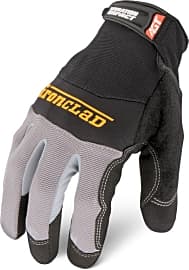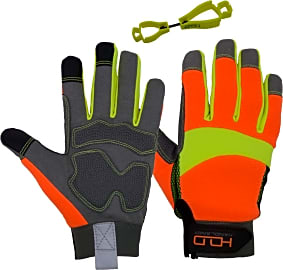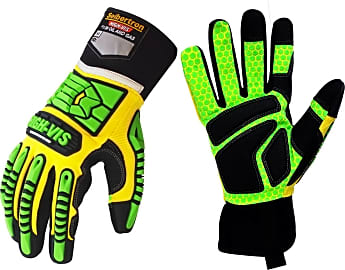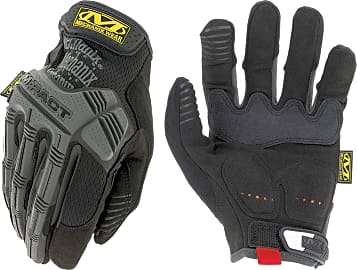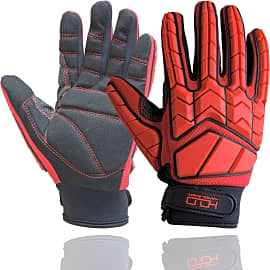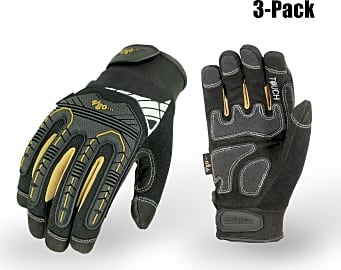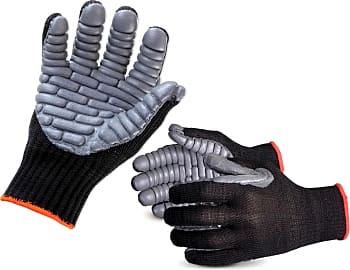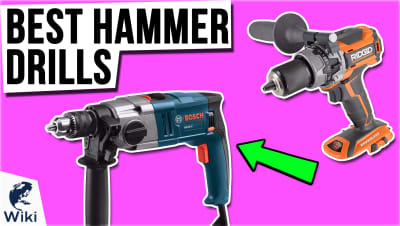The 10 Best Anti Vibration Gloves

This wiki has been updated 34 times since it was first published in October of 2016. Your hands tend to fatigue quickly when working with power tools, jack hammers and other pieces of heavy machinery that generate a significant shaking action. These anti-vibration gloves are made with special padded materials to provide stability and minimize the strain caused by these activities. They come in both half-finger and full-finger designs with varying levels of thickness. When users buy our independently chosen editorial selections, we may earn commissions to help fund the Wiki.
Editor's Notes
June 25, 2021:
We're pleased to report that our previous suggestions are all still great choices, and in fact span a wide range of use cases. If vibration is your only focus, the Cestus TrembleX remain at the top because of their superior ventilation. If you prefer full-finger protection, the Ironclad Wrenchworx are a great and affordable model, and heavily reinforced models like the Mechanix MPT-58-010 and Seibertron High-Vis are perfect for high-risk construction or contracting work.
March 25, 2020:
Though described as vibration-resistant gloves, it appears the Healthcom Level 5 do not provide any such benefits, instead offering protection from heat and cuts. We removed this from the list due to irrelevance.
We noted that in addition to their bright orange color, the Handlandy Impact feature a reflective strip on the wrist, which makes these a good option for road crews and construction workers who are on the job at night or early in the morning.
Both new additions can be cleaned in the washing machine. Users of the Superior S10VIB note that while the thick padding provides ample protection, it can limit dexterity when handling certain equipment. The Mechanix MPT-58-010 are suitable for an array of activities, from construction or working on cars to biking over rough terrain.
Special Honors
Forcefield Delta Force Forcefield’s Delta Force line includes a pair of full-finger, fluorescently colored gloves with a reflective strip for low-light visibility, as well as a half-finger pair with a spandex back for exceptional flexibility. Factory workers, tradesmen, and truck drivers all stand to benefit from these offerings. forcefieldcanada.com
Performance Health VGB500 With these gloves, a special polymer gel in the palm and thumb area helps shield two of the most vulnerable parts of your hand. The half-finger design allows you to enjoy free use of your fingertips, so your dexterity should not suffer when wearing them. performancehealth.com
The Hazards Of Hand-Arm Vibration Overload
Often, the first warning sign of HAVS is that pins-and-needles tingling sensation in your fingers.
Depending on your occupation, the workplace can be an inherently dangerous place. This is particularly applicable to those who frequently use powered hand tools or experience continuous exposure to vibrating surfaces during their daily work.
These folks are the most at-risk for developing a condition called hand-arm vibration syndrome. This refers to the adverse effect continuous vibration can have on the nerves, muscles, joints, and blood vessels in the hand and arm. Health officials have been aware of HAVS for several decades, and it remains a commonly reported ailment among workers in the construction, mining, and manufacturing industries.
Often, the first warning sign of HAVS is that pins-and-needles tingling sensation in your fingers. Most people who occasionally use vibrating power tools would recognize the feeling, which usually subsides within minutes.
For those who use these tools on a regular basis, however, it’s a different story. Typically, the feeling begins in the tip of your finger, eventually progressing throughout the entire digit. In some cases, the finger will turn white when this happens. In addition to the color change, an intensified sensitivity to hot and cold temperatures may occur, as well.
If the sufferer does nothing to address the issue, he or she will eventually lose all feeling in the finger. This dramatically reduces manual dexterity in the hand, at which point fine motor tasks — such as zipping your pants or tying your shoes — will become difficult or even painful. In advanced stages, a person may experience visible tissue damage or a total loss of function in the digit.
Left untreated, HAVS can clearly become a debilitating malady in itself, but it also increases the chance of developing carpal tunnel syndrome, tendonitis, and arthritis. While some individuals are more susceptible than others, proper protection is essential for all workers who regularly expose their hands and arms to high-frequency vibrations.
Who’s At Risk?
Even if you’re not constantly banging away with a jackhammer or operating a hammer drill, typical everyday activities can have similar effects. If you’ve pushed a lawnmower around for several hours in a day or completed a lengthy bike ride, you’re probably familiar with the feeling.
When you think of vibrating equipment, jackhammers and chainsaws are two tools that likely come to mind right off the bat because they’re so loud and powerful.
That being said, laborers who use power tools on a daily basis (or close to it) are the most likely to develop HAVS over the course of time. This includes those who work in the trades — carpenters, plumbers, electricians, mechanics, sheet metal workers, and those with similar vocations — as well as a variety of positions within the mining, forestry, and manufacturing industries.
When you think of vibrating equipment, jackhammers and chainsaws are two tools that likely come to mind right off the bat because they’re so loud and powerful. Construction workers and road crews who need to break up substantial amounts of concrete or pavement will probably spend an ample amount of time operating a jackhammer, while certain forestry professionals and landscapers wield chainsaws with regularity.
The tool doesn’t have to be large and intense to make a significant impact, though. While power sanders and grinders are more compact, they’ll still leave a mark on the user, whether that’s a metal worker, a cabinet maker or an auto mechanic. The shaking of your hands and arms, while a bit more subtle, can be equally as damaging with these tools.
Pneumatic drills and power drills are frequent culprits, as well, particularly because they’re a critical component to a variety of professional tool bags, from electricians and plumbers to mechanics and welders.
Just remember, it doesn’t matter if the tool is powered by electricity, gasoline or air — if it vibrates, it can cause harm.
Equip Yourself With Unwavering Protection
Those who are new to the concept often confuse anti vibration gloves with impact reducing gloves, so it’s important to make the distinction.
Whereas impact reducing gloves absorb and deflect the force of blows and dampen mild shocks and vibrations, anti vibration gloves are designed to provide protection and control specifically for working with the high-vibration machines and tools capable of causing HAVS after extended use.
Anti vibration gloves cannot protect you completely from these tools and machines, but investing in a solid pair — coupled with using quality tools that feature anti-vibration technology — will help mitigate the adverse effects that stem from the vibrations.
These organizations require gloves to have a full-finger design, which means you should avoid any fingerless models that market themselves as anti vibration.
Keep in mind that a glove claming to have anti-vibration properties has not necessarily been tested by a third party to meet the requirements of the American National Standards Institute and the International Organization for Standardization, which serve as the global benchmark for anti vibration gloves.
These organizations require gloves to have a full-finger design, which means you should avoid any fingerless models that market themselves as anti vibration. Gloves must also feature a palm pad that stretches from the base to the fingertips for full protection of the affected areas of your hand.
Once you confirm that the gloves are up to ANSI and ISO standards, you can shift your focus to some of the more ancillary characteristics that will influence your decision. Your requirements regarding the thickness of the padding, for example, will almost certainly be different if you routinely operate a chainsaw versus a lightweight power drill.
When using a heavy-duty tool like a chainsaw, you’ll want multiple layers of firm padding covering all of the vulnerable areas of your hand to guard against intense, high-frequency vibrations. Drill users, on the other hand, will probably prefer thinner padding and a more flexible fabric that allows for greater control and dexterity when utilizing a smaller tool.
The material of the gloves is another important factor to consider. If your workplace or typical job site exposes you to hazards beyond hand-arm vibrations, such as impacts and punctures, you’ll probably want to go with a durable, woven fabric that is resistant to cuts and abrasions. Those who work outside in cold climates will probably prefer a pair with thermal lining for extra warmth, while workers who require precise control and maneuverability of their tools will likely opt for gloves that have a seamless, form-fitting design.


